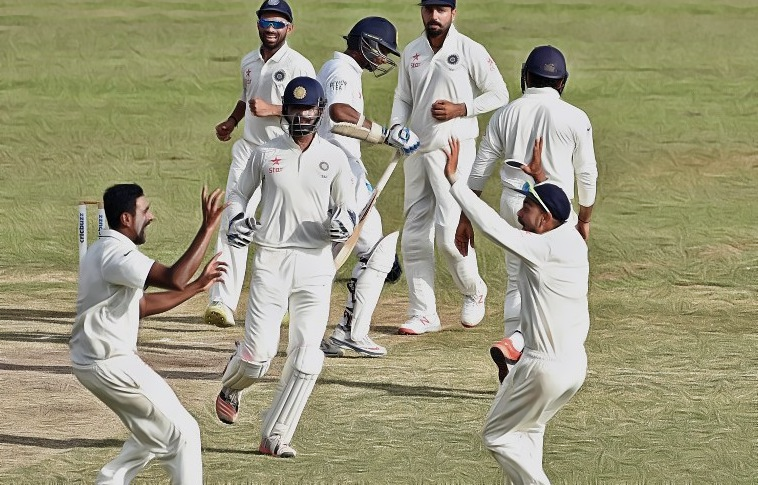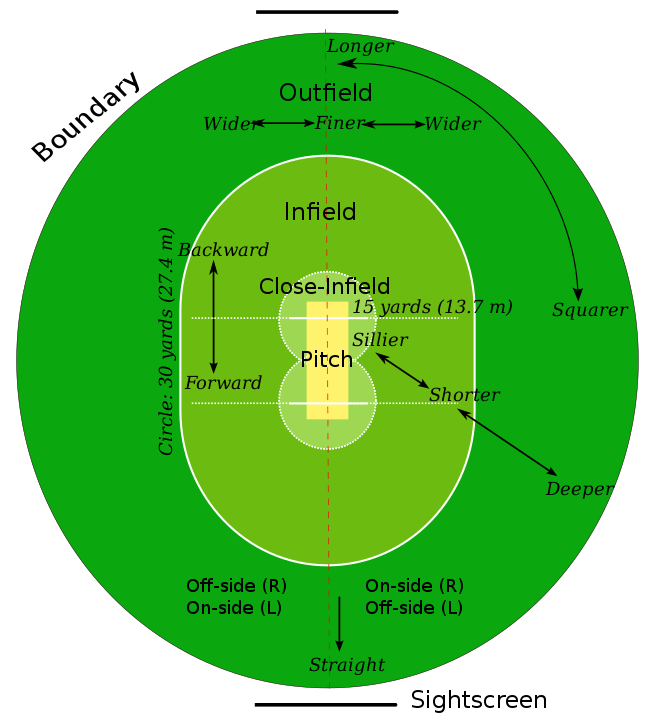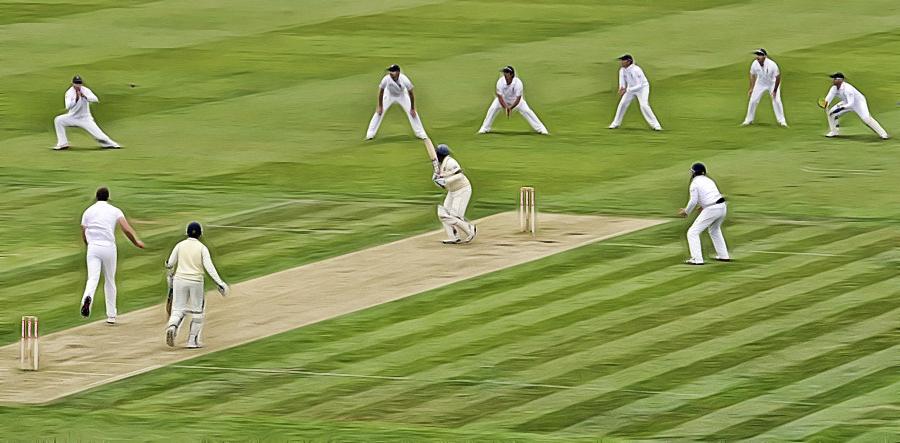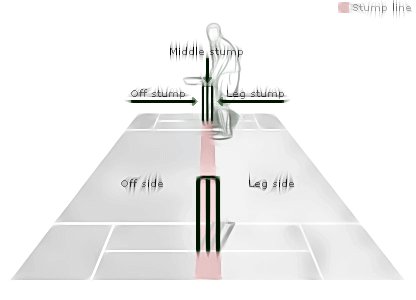
Beginners Guide to Cricket
Top Cricket Bats Reviewed
Find out if the bats you use/prefer are worth their price, and if other brands offer the same value for money. ...
Find out moreTop Cricket Balls Reviewed
Find out which balls have better seams, better leather quality, and better value. Compare brands to find which o...
Find out moreTop Cricket Wickets Reviewed
Find out which set of stumps and bails suit your playing preference. Check out Betwala’s review on some of the t...
Find out moreTop Cricket Gloves Reviewed
Find out which brands of wicket-keeping gloves suit your preference. Check out Betwala’s reviews on some of the ...
Find out moreTop Cricket Helmets Reviewed
Find out which brand of cricket helmets are stronger, cheaper, and safer. Check out Betwala’s review on some of ...
Find out moreTop Cricket Protective Gear Reviewed
Find out which protective gear item and brand provides the best value for your money.
Find out moreTop Cricket Shoes Reviewed
Find out which brand of cricket shoes fit your taste, price range, and have unique features (if any). Check Betw...
Find out moreTop Cricket Clothing Reviewed
Find out which cricket clothing brands offer the best value for money, is more comfortable, and can be used for ...
Find out moreTop Cricket Complete Sets Reviewed
Find out which cricket complete sets are worth their value, which have the highest quality, and which are the mo...
Find out moreTop Cricket Kit Bags Reviewed
Find out which cricket kit bags are worth their value, can carry a lot of stuff, which have features that can ai...
Find out moreTop Cricket Equipment Brands Reviewed
Find out which cricket brands offer the best value for money. Read Betwala’s review to find out more.
Find out moreBeginners Guide to Cricket

“I don’t like cricket, I love it.” — Dreadlock Holiday, 10cc
It is decided that cricket will be played in a ‘gentlemanly manner,’ which meant no cheating, sledging, temper tantrums, excessive appealing, and rowdiness. If the batsman knew he was out, he should walk even if the umpire decides otherwise.
Cricket is most famous in India. Just ask anyone about Sachin Tendulkar, MS Dhoni, or Virat Kohli and you could have a never-ending conversation. Similarly, kids of all ages play cricket — in the streets or in the fields. This is because cricket can easily be recreated. All you need are five sticks — three for the stumps and two for the bails which make up the wicket — a ball, and a bat.
Cricket Basics
Teams
Cricket is played by two teams. A coin toss decides which team bats or fields/bowls first. The fielding team has 11 players on the field while the batting team can only play two team members at a time. The fielding team’s goal is to prevent the batsmen from scoring runs while the batsmen’s goal is to score as many runs as possible within a given number of attempts.
Playing Field
Field

The field, as it is referred to in cricket, is the entire play area that dictates how many runs are scored and is usually oval in shape. There are, however, no fixed dimensions for the field but its diameter usually varies between 450 feet (137.16 m) and 500 feet (152.4 m). There is also no official rule that dictates the shape of the field for professional games.
There is, regardless of the shape of the field, a perimeter that marks the boundary. This helps determine whether a batsman has scored four or six runs. Cricket rules dictate that “...With respect to the size of the boundaries, no boundary shall be longer than 90 yards (82.29 meters), and no boundary should be shorter than 65 yards (59.43 meters) from the center of the pitch to be used.”
Within the boundary and as close to the center as possible are the square and the pitch.
Pitch

The cricket pitch is where most of the action takes place in a cricket game. The bowler releases the ball from one end, while the batsman hits at the other. Every time this is done, the eyes of everyone present -- players, umpires, and spectators alike -- are focused on it. It is 22 yards (20.12 m) long and 10 feet (3.05 m) wide. On and around those 22 yards (20.12 m) are a number of markings, mapped out with white painted lines called creases.
Crease
The crease is used to identify whether a bowler or batsman has violated certain rules as well as determine where they can move in-play. There are four creases marked on both ends of the pitch: one popping crease, one bowling crease, and two return creases.
The popping crease is 4 feet (1.22 m) in front of and parallel to the bowling crease and must be marked to at least 6 feet (1.83 meters) perpendicular to pitch. It is used to determine if the bowler has bowled a no ball or if a batsman is stumped or run out.
The bowling creases are 8 ft (2.44 meters) 8 in (2.64 m) long and 22 yards (66 feet (20.12 m) or 20.12 m) away from each other. They are used to determine if the ball is a no ball (if a fielder interferes on the pitch or if the wicket-keeper moves in front of the wicket before he is allowed to do so).
The return creases, perpendicular to the popping crease and the bowling crease, are 4 feet (1.22 m) 4 inches (0.1 m) on either side. They are used to primarily determine whether a bowler has bowled a no-ball.
To avoid a no-ball, the bowler must deliver the ball within the area marked by the return creases and the popping crease.
Protected Area
The protected area (or danger area) is the central portion of the pitch — a rectangle running down the middle of the pitch, 2 feet (0.61 m) wide, beginning 5 feet (1.52 m) from each popping crease. Under the Laws of Cricket, a bowler must avoid running on this area during his follow-through after delivering the ball.
The rule does not prevent the bowler or any other fielder from running on the protected area in an effort to field the ball; it applies only to the uninterrupted follow-through.

Fielding Teams
The fielding team is composed of 11 players: one bowler, one wicket-keeper, and nine fielders. The bowler is the player that throws the ball, the wicket keeper stands behind the wickets opposite the bowler, while the fielders are scattered across the field. They can prevent the opposing team from scoring by:
- hitting the wicket with the ball when bowling,
- catching the batsman’s shot,
- hitting the batsman’s leg in front of the cricket, or
- hitting the wickets before the batsmen can run to the other end of the pitch
If any of these happen, then a batsman is considered out.
Batting Team
The batting team (batsmen) can only have two players at a time on the field. Their goal is to score runs. This can be done by:
- hitting the ball and running between the wickets and making it to the other end before the fielders can hit the wickets with the ball,
- hitting the ball to the boundary along the ground is 4 runs, or
- hitting the ball over the boundary on the full equals 6 runs
The fielding team must get 10 batsmen out before they can change over and start batting. The aim of the game is to score as many runs as possible before the fielding team takes 10 wickets. The team with the most runs wins.
Wickets
The wicket is made up of two parts — stumps and bails. The stumps are the three vertical posts that support the bails. The bails are two smaller sticks placed on top of the stumps. They are used to determine whether a batsman is out bowled, stumped, run out or hit wicket.
Cricket Equipment

Clothing/Uniform
The classic cricket uniform, called cricket whites of flannels, usually consists of trousers, shirt, jumper, and a jockstrap with cup pocket and “box”, or protective cup, and were originally white. Today, whites are only worn during Test cricket. One Day International (ODI) and Twenty20 (T20) matches are played with the teams wearing team uniforms in their colors.
Safety Gear
Batsmen are allowed to wear gloves. These are thickly padded above the fingers and on the thumb of the hand, to protect against impact from the ball as it is bowled. They also wear a helmet to protect their heads from fast deliveries. The batsman can also be out if the ball touches the glove instead of the bat, provided the hand is in contact with the bat. This is because the glove is considered to be the extension of the bat.
Wicket-keepers are the only person on the fielding team that is allowed to wear gloves and external leg guards. Their gloves are similar to that of the batsmen but have webbing between the thumb and the index fingers.
As with any other sport, there are rules that need to be followed in order to keep the game fair for both teams. There are rules to determine how many runs are scored and when a player is considered out.
Cricket Scoring Rules
Running Between Wickets
One of the main cricket rules is that for batsmen to score runs they must run to each other’s end of the pitch (from one end to the other). To score a run, a striker must hit the ball and run to the opposite end of the pitch, while his non-striking partner runs to his end. Both runners must touch the ground behind the popping crease with either his bat or his body to register a run. This is known as running between wickets. Cricket rules state they may do multiple runs per shot.
Boundary
Other than running, they can also score runs by making use of the boundary. If the batsman hits the ball such that the fielders fail to stop it reaching the boundary of the field, four runs are credited to him immediately, regardless of the number of times he ran between the wickets. If the ball flies directly over the boundary without touching the ground inside the field, then the batsman scores six runs instead of four.
Alternative Scoring
Other ways runs can be scored according to the cricket rules include no balls, wide balls, byes & leg byes. Cricket rules state that all runs scored by these methods are awarded to the batting team but not the individual batters.
- A No Ball can be declared for many reasons:
- if the bowler bowls the ball from the wrong place
- if the ball is declared dangerous
- if it bounces more than twice or rolls before reaching the batsman, or
- if fielders are standing in illegal positions
The batsman can hit a no ball and score runs off it but cannot be out from a no ball except if they are ran out, hit the ball twice, handle the ball, or obstruct the field. The batsman gains any runs scored off the no ball for his shot while the team also gains one run for the no ball itself.
- A Wide Ball will be declared if the umpire thinks the batsman did not have a reasonable opportunity to score off the delivery. However, if the delivery is bowled over the batsman's head, it will not be declared a wide but a no ball. Umpires are much stricter on wide deliveries in the shorter format of the game. A wide delivery will add one run to the batting team and any runs scored by the batsman. The batsman is not able to get out off a wide delivery except if they are stumped, run out, handle the ball, hit their wicket or obstruct the field.
- A Bye is where a ball that isn’t a no ball or wide passes the striking batsman and runs are scored without the batsman hitting the ball.
- A Leg Bye is where runs are scored by hitting the batsman, but not the bat and the ball is neither a no ball or wide. However, no runs can be scored if the striking batsman didn’t attempt to play a shot or if he was avoiding the ball.
Cricket Outs
There are a number of different ways a batsman can be given out in the game of cricket. When a bowler gets a batsman out it is said that the bowler gets a “wicket”. The following are different ways a batsman can be given out:
- Bowled — if the ball is bowled and hits the batsman’s wicket, the batsman is given out (as long as at least one bail is removed by the ball). It does not matter whether the ball has touched the batsman’s bat, gloves, body, or any other part of the batsman. However, the ball is not allowed to have touched another player or umpire before hitting the wickets.
- Caught — if a batsman hits the ball or touches the ball with his bat or hand/glove holding the bat, then the batsman can be caught out. This is done by the fielders, wicket-keeper or bowler catching the ball (before it bounces). If this is done, then cricket rules state the batsman is out
- Leg Before Wicket (LBW) — the umpire will consider an lbw decision if he believes the ball would have hit the stumps had it not been obstructed by the batsman's pads. However, for the umpire to give this out he must consult other rules

There are certain rules that dictate whether a batsman is out or not. One of the most important rules when making an lbw decision is a batsman cannot be given out if the ball pitches outside leg stump. It does not matter if the ball would have gone on to hit the stumps, it cannot be given out. A batsman also cannot be given out if the ball hits the bat before the pad.
Stumped — a batsman can be given out according to cricket rules when the wicket-keeper puts down his wicket while he is out of his crease and not attempting a run (if he is attempting a run it would be a run out)
Run Out — a batsman is out if his bat or body is not touching the ground and is behind the popping crease while the ball is in play, and the wicket is fairly put down by the fielding side
Hit Wicket — if a batsman hits his wicket down with his bat or body after the bowler has entered his delivery and the ball is in play, then he is out. The striking batsman is also out if he hits his wicket down while setting off for his first run
Handled The Ball — cricket rules allow the batsman to be given out if he willingly handles the ball with the hand that is not touching the bat without the consent of the opposition
Timed Out — an incoming batsman must be ready to face a ball or be at the non-striker's end with his partner within three minutes of the outgoing batsman being dismissed. If this is not done the incoming batsman can be given out
Hit The Ball Twice — cricket rules state that if a batsman hits the ball twice, other than for the purpose of protecting his wicket or with consent from the opposition, he is out
Obstructing The Field — a batsman is out if he willingly obstructs the opposition by word or action
Cricket Forms
T20
Twenty20 (or T20) matches are shorter, fast-paced forms of a cricket game, aimed at attracting more viewers. Teams only have 20 overs (or 120 balls) each to score as many runs as they can. It usually follows the same rules as ODIs but with a few additions:
- Free Hit — the ‘Free Hit’ serves to penalize a bowler if he delivers a no-ball. The Free Hit is awarded following this violation and basically means that the batsman will not be given out for that delivery unless he is run out. The batsman is essentially given a free swing, without fear of the repercussions
- Five-run penalties — In Twenty20 cricket, an umpire may award one of the team’s five bonus runs if he feels the opposition is needlessly wasting time. This is designed to maintain the flow and pace of a Twenty20 match
- 75-minute time limits — Bowling teams are forced to complete their 20 overs within 75 minutes (i.e. three minutes and 45 seconds per over). A bonus of six runs is given to the batting team if the bowling side has not begun its twentieth over before their 75 minutes is up. Once again, this rule aims to maintain the rhythm and pace of the Twenty20 game
- Bowling restrictions of Twenty20 — In a move once more designed to favor the batting team, individual bowlers are only allowed to bowl for a total of four overs during a Twenty20 game. This obviously limits the damage that can be inflicted on the batting side by a single, in-form bowler
- The 90-second rule — Once a wicket has fallen in a Twenty20 match, the following batsman must take up his position at the wicket or bowler’s end within 90 seconds. If they are unable to do so, they could potentially be disqualified from batting in the match
- Fielding restrictions of Twenty20 — Twenty20 cricket laws only allow five fielders to stand on the leg side of the batsman at any one time. Similarly, only two fielders are allowed to stand outside of the inner circle in the first six overs of play. This number increases to five fielders in the remaining 14 overs. These restrictions are designed to increase the flow of runs in a match, in order to create more of a spectacle for watching fans
- Bowl-outs — Similar to the penalty shootout in other sports, bowl-outs take place at the end of tied Twenty20 matches. Five bowlers from each side are allowed to bowl twice at the wicket, with no batsman standing in its way. The team to topple the most wickets wins the game
One-Day International
A One-Day International (ODI) is a form of limited overs cricket, played between two teams with international status, in which each team faces a fixed number of overs, usually 50.
This form generally follows these rules:
- An ODI is contested by two teams of 11 players each
- The Captain of the side winning the coin toss chooses to either bat or bowl (field) first
- The team batting first sets the target score in a single innings. The innings last until the batting side is "all out" (i.e., 10 of the 11 batting players are "out") or all of the first side's allotted overs are completed
- Each bowler is restricted to bowling a maximum of 10 overs. Therefore, each team must comprise at least five bowlers (either dedicated bowlers or all-rounders)
- The team batting second tries to score more than the target score in order to win the match. Similarly, the side bowling second tries to bowl out the second team or makes them exhaust their overs before they reach the target score in order to win
- If the number of runs scored by both teams is equal when the second team loses all its wickets or exhausts all its overs, then the game is declared a tie (regardless of the number of wickets lost by either team)
Tests
Test cricket is similar to exhibition matches that ‘test’ the skills of teams. It is considered as the most complete form of cricket as all aspects of cricket both within and outside the player’s control are involved in Test cricket.
A Test match is played over a duration of 5 days in which 90 overs are bowled in a day. A day is divided into 3 sessions of 2 hours each with two breaks between them, including a tea break. There is also a 5-minute drink break in the middle of a session. Each team usually needs to bat and bowl for two innings each.
There are 4 possible results in a Test match: win, lose, draw, or tie.
- Win — If the team scores more runs from their innings than the other team or dismiss all batsmen from the other team before they can reach the target or if the opposing team concedes the match, they win
- Lose — The team loses the match if all the batsmen of the team are dismissed before they reach the target score set by the other team or if they are unable to dismiss all batsmen of the other team before they reach the target or if they concede the match
- Draw — The match is drawn if there is no conclusive result at the end of day 5. This can happen under a variety of circumstances like a team being unable to defeat the other team, not being able to continue the match due to bad weather or dangerous playing conditions
- Tie — If all batsmen of both teams are dismissed and the combined scores of both innings are the same
At the start of a Test match, a coin toss is done between the team captains. The winner of the toss gets to decide whether their team will bat or field first.
For bowlers in test cricket, taking wickets is more important than preventing batsmen from scoring runs. This allows bowlers to try a variety of different deliveries and try to find weaknesses in the batsmen to exploit. Since there are no fielding restrictions, the captains usually set aggressive fields to help the bowlers.
As the match progresses, the nature of the pitch changes. Typically, the pitch will be batter-friendly in the first three days and bowler-friendly in the last two days.
Professional Cricket

As with other major sports, cricket also has international tournaments. The teams that participate in these events have been playing cricket for as long as the game has been around, with some being included as the years went on.
In the current International Cricket Council (ICC) Cricket World Cup, India, Australia, England, and New Zealand are headed into the semi-finals stage of the tournament. Since the start of the world cup, India has been the favorite of commentators, retired players, fans, and sports analysts alike; Australia, being the defending world champion, will look to defend their title; England and New Zealand will both be looking for their first world championship. However the semi-finals will play out, one thing is for certain: no team is going down without a proper fight.
Jaina vs Cosco Cricket Balls
Both made for tournament matches, both made of quality materials, both made to be used in tournaments and practi...
SG vs DSC Cricket Helmet
Two inexpensive helmets for casual and non-professional games. A. SG Cricket Helmet
Why You Need to Play Live Baccarat
Find out why you need to play live baccarat at casino sites. Know the rules of the game and where you can play i...
Using SticPay Deposit at Online Casinos
Find out how to use SticPay deposit at online casinos. Know the best online casinos to make a SticPay deposit. ...
What is a Casino Price Boost?
Find out what is the casino price boost and how you can use it. Know the best online casino sites where you can ...
Online Casino Slots
Learn more about how slots work and the different factors you should consider while playing. Find out what are t...
Why You Should Wager with Real Money
Find out why you should use real money as you wager on sports betting sites. Know its advantages, disadvantages,...
Why You Need to Play Live Roulette
Find out why you need to play live roulette at online casinos. Know how to play live roulette and the best onlin...
SG vs GM Cricket Bats
A short, comprehensive review of the two most known cricket equipment suppliers: Sanspareils Greenlands versus G...